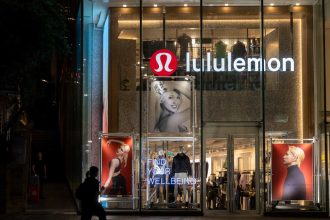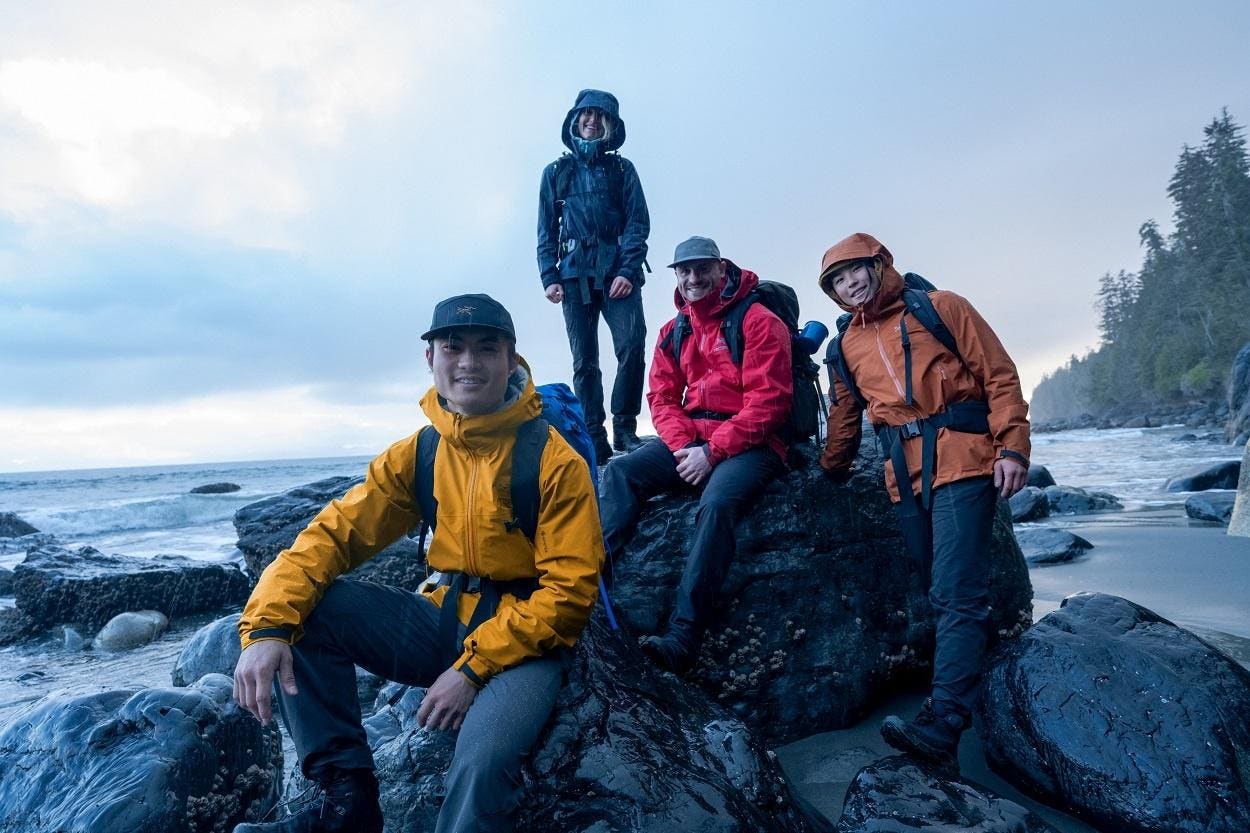Amer Sports got a mere 3% bump during its NYSE opening day, closing at $13.40 per share, even after it discounted its opening stock price to $13 per share from the planned $16 to $18.
Amer Sports impressive portfolio of brands includes outdoor premium fashion apparel Arc’teryx, rugged winter sports specialist Salomon, plus the iconic American Wilson Sporting Goods and Louisville Slugger, yet investors were cautious about playing on its team.
Observing there was little sell-side interest in the company, CNBC reported that based upon the closing share price and the company’s 484 million outstanding shares, Amer Sports estimated market capitalization was $6.49 billion, down from the previous valuation in the $8.7 billion ballpark.
“It’s all about the market dynamics,” CEO James Zheng shared with Bloomberg after the opening. “We’ve built up a very solid foundation in the past four years. Internally, our company has still got very high confidence to continue to grow the company. And the price point I’d say is a bit frustrating as a starting point. But I think, it’s just a short term view on this.”
Balance Sheet Out Of Balance
Despite dynamic growth from $2.4 billion in 2020 to $3.5 billion in 2022 and adjusted EBITDA up from $311.4 million to $453 million, the company remains unprofitable, with a loss of $253 million in 2022.
It forecasts 2023 year end losses to range from $204 million to $234 million on revenues expected to reach $4.4 billion. Through the first nine months of 2023, revenues were up 30% over 2022.
Claiming the company is saddled with $2.1 billion in debt, CNBC’s outspoken James Cramer was down on the stock even as he admitted he loved the Amer Sports’ brands.
“So far, this is looking like another out-of-favor IPO. I’d say Amer Sports is a great example of the kind of deals that I wish we weren’t seeing,” he said, adding that its balance sheet is “less than ideal.”
Originally based in Finland, Amer Sports was acquired in 2019 by a consortium led by China’s Anta Sports Products, Tencent, Asian investment fund FountainVest Partners and Lululemon founder Chip Wilson’s Anamered Investments.
Zheng was previously president of Anta Sports and before that held senior executive and sales roles at Adidas, Reebok and Procter & Gamble
PG
Wilson’s investment lends bonafides to the company’s positioning; however, Cramer takes issue with its primarily Chinese ownership.
“For starters, it’s a Chinese-owned company. And historically, Chinese IPOs tend to be very poor performers. Even after this IPO, that consortium will still own a majority stake in the company meaning the public shareholders are hostage to their decisions,” he said.
Regional Opportunities
Currently, Amer Sports has operations in 41 countries and sells products in over 100 countries. Yet on a regional basis, China represented only 15% of revenues, compared with the lion’s share from the Americas (42%) in 2022. And there are major differences in the popularity of its brands in different regions.
Through the first nine months of 2023, Wilson Sporting Goods derived some 70% of its nearly $900 million in revenues here. But it only generated 5% of revenues in China.
Given the popularity in China of such American sports brands like Nike,
NKE
In addition, its other two hero brands, Arc’teryx and Salomon, have a long runway in the Americas. The Americas represented only 35% of Arc’teryx’s $942 million and 30% of Salomon’s $949 million through the first three quarters of 2023. Arc’teryx is strongest in China (43%) and Salomon in the EMEA (58%).
Distribution Model
Amer Sports relies heavily on wholesale retail partnerships for revenues, representing some 71% of total revenues. This is an advantage since serious-minded outdoor and sports enthusiasts often seek the expertise of specialty retailers to guide their purchase decisions.
All its brands are heavily invested in retail partnerships. Wilson alone distributes through 15,000 retailers, with Dick’s and Academy being major players. Salomon is carried by REI, Eastern Mountain Stores, Ski Barn and Dick’s. And Arc’teryx is popular at REI, Ski Barn and Nordstrom considers it a performance brand with enough fashion cred to be carried in its stores.
In addition, the company operates 330 owned stores, which currently account for 15% of revenues. For example, in North America, Arc’teryx has 48 full priced stores and seven factory outlets and Wilson has outlets in New York City and Chicago, plus the Louisville Slugger museum and store in Kentucky.
E-commerce generates the remaining 14% of revenues and the company has identified this as a particularly strong growth channel for Arc’teryx.
Powerhouse Brand Portfolio
The company divides its 11 brands into three buckets:
- Technical Apparel, led by Arc’teryx and including Peak Performance. This segment generated $1 billion in 2022, up 15% over 2021.
- Outdoor Performance, led by Salomon with ski specialists Atomic and Armada, plus ENVE serving the bike industry. It generated $1.4 billion, up 15% over 2021.
- Ball and Racquet Sports, led by Wilson, includes Atec baseball field equipment supplier, Evoshield ball player safety equipment, DeMarini metal bats and the historied Louisville Slugger. This segment brought in $1 billion, up 18% over 2021.
If the company can get its balance sheet balanced and effectively manage its brands and their distribution across regions, it should be able to enter the winner’s circle with the investment community as it has on the ball field, ski slope and in the backwoods.
“There is not another portfolio on the globe that has the the array and the scope of sporting products across apparel, footwear and equipment and across winter, spring, summer seasons that we do,” shared CFO Andrew Page with me before yesterday’s opening.
“We speak to participants across a number of different sports. As far as another company with a portfolio of premium performance products like ours, we sit alone,” he concluded.
Read the full article here





